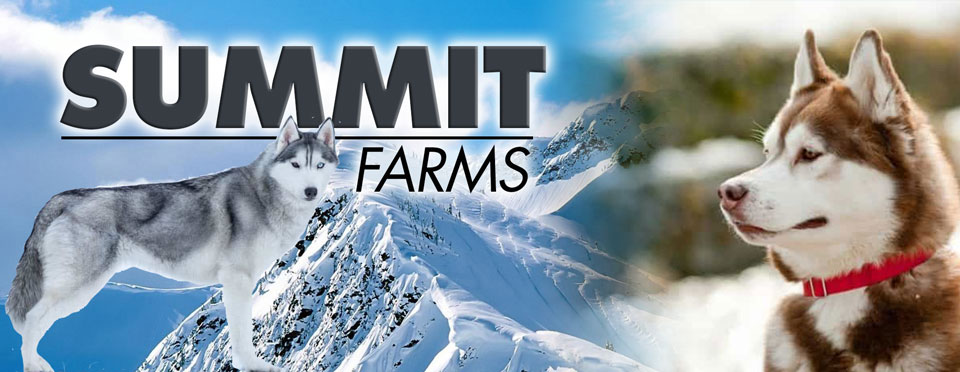

Appearance
The natural range of size for these dogs is 23 inches tall and 75 pounds for females and 25 inches tall and 85 pounds for males. There is often a size difference between males and females and can see weighs reaching up to 100 pounds.
The coat of the Alaskan Malamute is a double coat. The undercoat has an oily and woolly texture and can be as thick as two inches. The outer guard coat is coarse and stands off the body longer at the withers but not more than one inch off the sides of the body. Their usual colors are various shades of grey and white, sable and white, black and white, seal and white, red and white, or solid white. In terms of color variants, some Malamutes exhibit a dark grey to buff-colored undertone around their trimmings and white areas, presenting with a color-linked gene known as Agouti. Two agouti alleles, with the possibility of a third, appear to be found in Malamutes: aw (Agouti Pattern or Wolf/Wild Pattern), at (Tan Point Pattern or Black Pattern), and awat (Heterozygous Agouti or Dark Agouti).
Their ears are generally upright, wedge-shaped, small in proportion to the head and set to the side of the skull. The muzzle is deep and broad, tapering slightly from the skull to the nose. Nose and gums are black but some Malamutes have a snow nose, which is black with a pink undertone that can get darker or lighter, depending on the season.
History
The Alaskan Malamute had a prominent role with their human companions as a utilitarian dog, working, hunting, and living alongside humans. The dogs were renowned for their excellent hunting abilities and were used to hunt large predators such as bears. They also aided their owners in finding seals by alerting them to seal blowholes. The interdependent relationship between the Malamute and their dogs fostered prosperity among both and enabled them to flourish in the inhospitable land above the Arctic Circle.
The Malamute dog has had a distinguished history; aiding Rear Admiral Richard Byrd to the South Pole, and the miners who came to Alaska during the Gold Rush of 1896, as well as serving in World War II primarily as search and rescue dogs in Greenland, although also used as freighting and packing dogs in Europe.
Lineage
Although it is believed that the first dogs arrived in the Americas 12,000 years ago, people and their dogs did not settle in the Arctic until the Paleo-Eskimo people 4,500 years ago, followed by the Thule people 1,000 years ago, with both originating from Siberia.
The Malamute has been identified as a basal breed that predates the emergence of the modern breeds in the 19th century. A study in 2013 showed that the Alaskan Malamute has a similar east Asian origin to, but is not clearly related to, the Greenland Dog and the Canadian Eskimo Dog, but contains a possible admixture of the Siberian Husky.
In 2015, a study using several genetic markers indicated that the Malamute, the Siberian Husky, and the Alaskan husky share a close genetic relationship between each other and were related to Chukotka sled-dogs from Siberia. They were separate from the two Inuit dogs, the Canadian Eskimo Dog and the Greenland Dog. In North America, the Malamute and the Siberian Husky both had maintained their Siberian lineage and had contributed significantly to the Alaskan husky, which showed evidence of crossing with European breeds that was consistent with this breed being created in post-colonial North America. DNA extracted from a 9,500-year-old dog, Zhokhov, named after the Siberian island, was found to have shared a common ancestor with the Greenland sledge dog, the Alaskan Malamute and the Siberian Husky.
All information found at Wikipedia